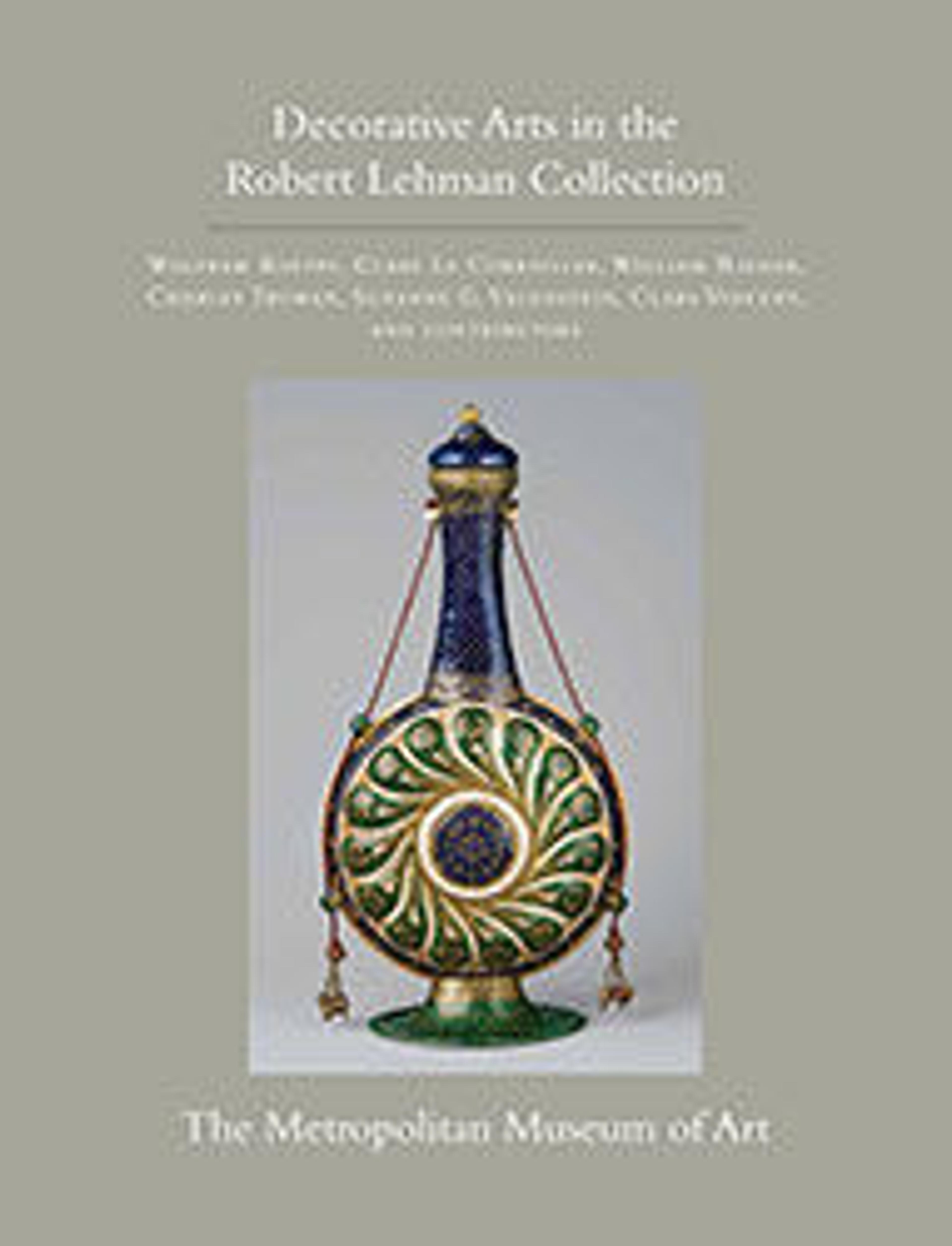Secretary
This upright rectangular drop-front secrétaire is thought to have come from the Parisian workshop of the French cabinetmaker ("maitre-ébeniste") Martin Carlin. From his quarters in the Rue de Faubourg Saint-Antoine, Carlin produced writing-desks, commodes, and secretaires inset with porcelain plaques or panels of "pietre dure", all exquisite pieces befitting his illustrious clientele. The daughters of Louis XV, Madame Adélaïde and Madame Victoire, decorated the Chateau Bellevue at Meudon near Paris with some of his masterpieces.
Carlin crafted several drop-front secrétaires like the one in the Lehman Collection. The present example has Ionic fluted columns in the forecorners and Ionic pilasters on the rear corners, resting on a lower stage supported on four straight tapering and fluted octagonal legs. The white marble top of the upper section is surrounded by a gilt bronze molding chased with laurel leaves and berries surmounted on the sides and back by an open-work gilt bronze gallery. The frieze of three recessed panels is mounted with gilt bronze floral garlands tied with flower heads and ribbons interspersed with shaped cartouches. The fall front and sides of the upper section are mounted with rectangular porcelain plaques, the front plaques decorated with baskets of flowers and leaves suspended from knotted ribbons on a green japanned ground. The lower stage is also fitted with porcelain plaques decorated with floral sprays. All the plaques are framed with a gilt bronze water-leaf molding. The interior is fitted with pigeon holes and six drawers veneered in tulip-wood. The forecorners of the lower stage are mounted with gilt bronze female masks enframed with leaves, berries, and garlands of beads; the rear corners are mounted with gilt bronze lion masks.
Carlin crafted several drop-front secrétaires like the one in the Lehman Collection. The present example has Ionic fluted columns in the forecorners and Ionic pilasters on the rear corners, resting on a lower stage supported on four straight tapering and fluted octagonal legs. The white marble top of the upper section is surrounded by a gilt bronze molding chased with laurel leaves and berries surmounted on the sides and back by an open-work gilt bronze gallery. The frieze of three recessed panels is mounted with gilt bronze floral garlands tied with flower heads and ribbons interspersed with shaped cartouches. The fall front and sides of the upper section are mounted with rectangular porcelain plaques, the front plaques decorated with baskets of flowers and leaves suspended from knotted ribbons on a green japanned ground. The lower stage is also fitted with porcelain plaques decorated with floral sprays. All the plaques are framed with a gilt bronze water-leaf molding. The interior is fitted with pigeon holes and six drawers veneered in tulip-wood. The forecorners of the lower stage are mounted with gilt bronze female masks enframed with leaves, berries, and garlands of beads; the rear corners are mounted with gilt bronze lion masks.
Artwork Details
- Title:Secretary
- Artist:Attributed to Martin Carlin (French, near Freiburg im Breisgau ca. 1730–1785 Paris) and
- Artist:Sèvres Manufactory (French, 1740–present) (soft-paste porcelain plaques) and
- Artist:various French painters, Paris (soft-paste porcelain plaques)
- Date:ca. 1781–85
- Medium:Oak veneered with tulipwood, amaranth, holly, ebonized holly, and other marquetry wood; brass; green-colored metal; gilt-bronze mounts; marble top. Soft paste porcelain plaques from the Sèvres Manufactory.
- Dimensions:H. 120.3 cm, W. 80 cm, D. 45.7 cm
- Classification:Woodwork-Furniture
- Credit Line:Robert Lehman Collection, 1975
- Object Number:1975.1.2026
- Curatorial Department: The Robert Lehman Collection
More Artwork
Research Resources
The Met provides unparalleled resources for research and welcomes an international community of students and scholars. The Met's Open Access API is where creators and researchers can connect to the The Met collection. Open Access data and public domain images are available for unrestricted commercial and noncommercial use without permission or fee.
To request images under copyright and other restrictions, please use this Image Request form.
Feedback
We continue to research and examine historical and cultural context for objects in The Met collection. If you have comments or questions about this object record, please contact us using the form below. The Museum looks forward to receiving your comments.
